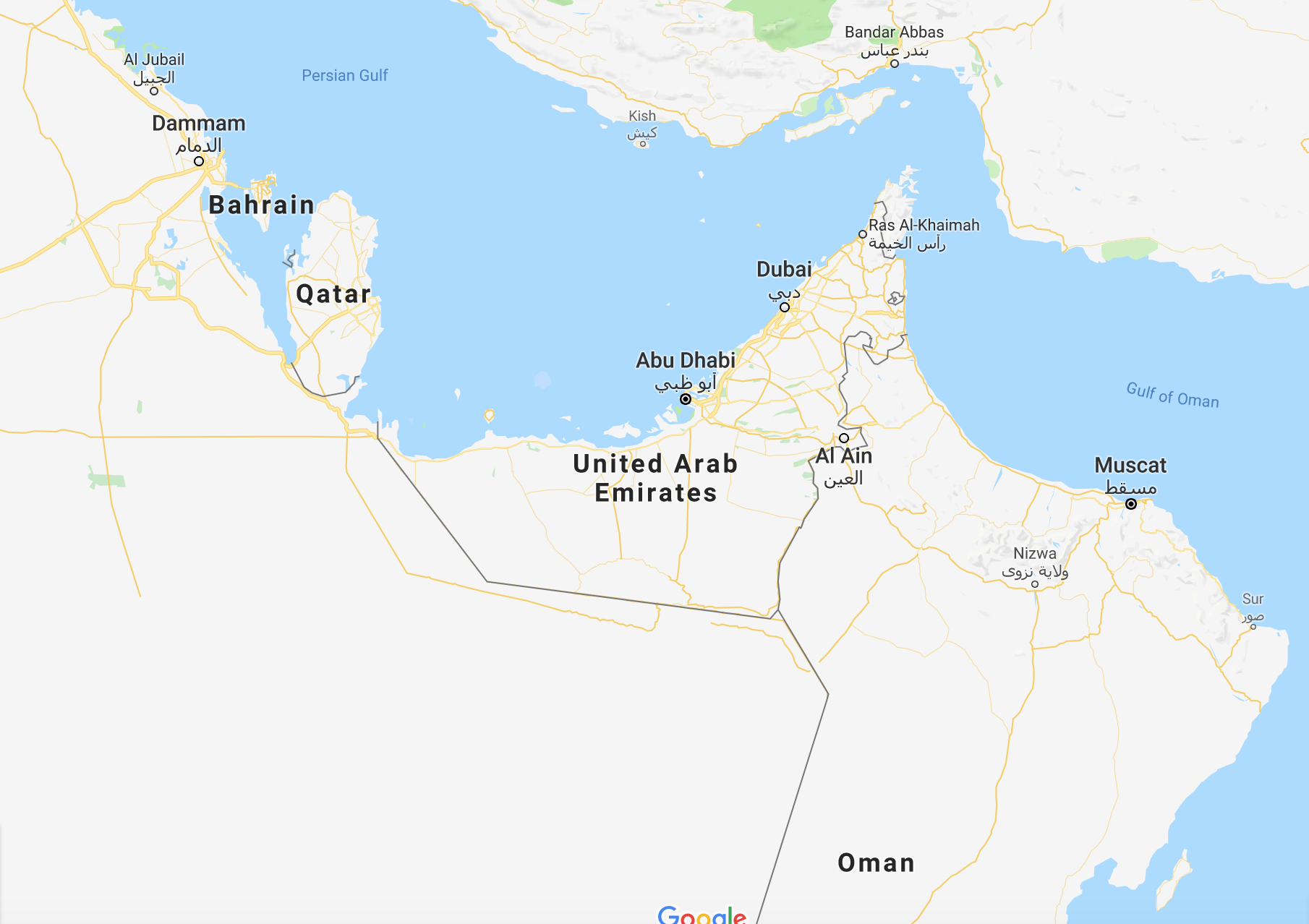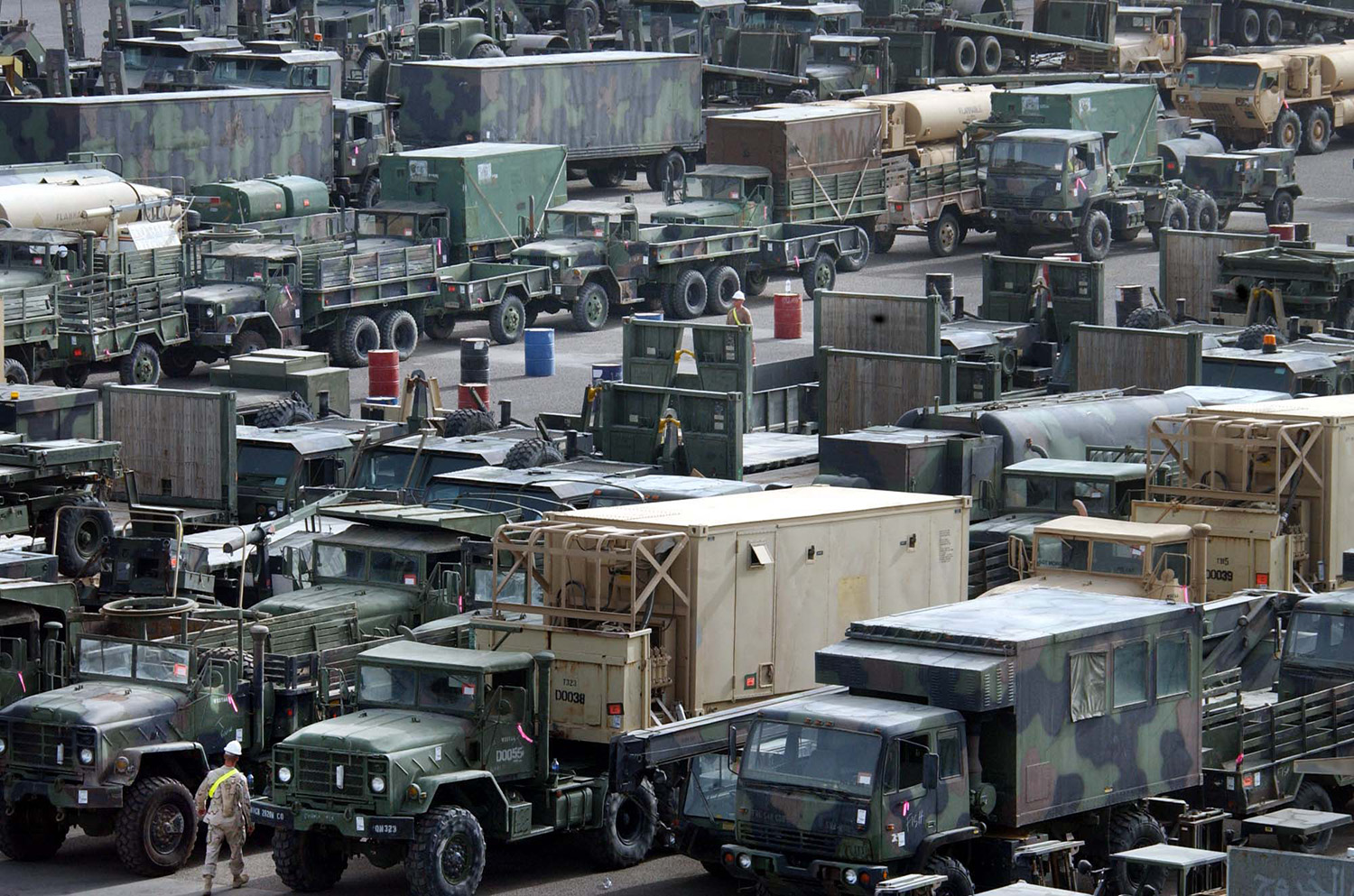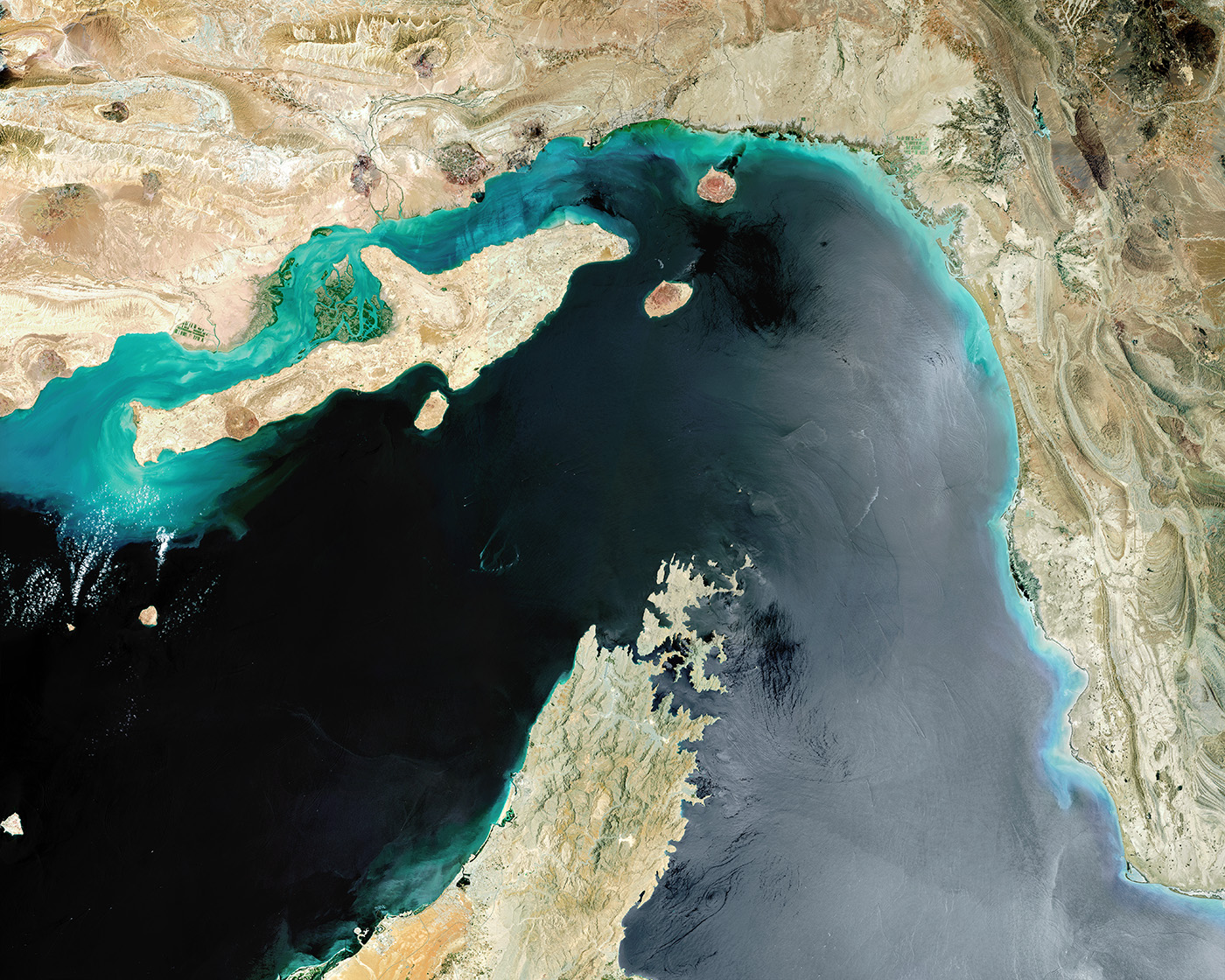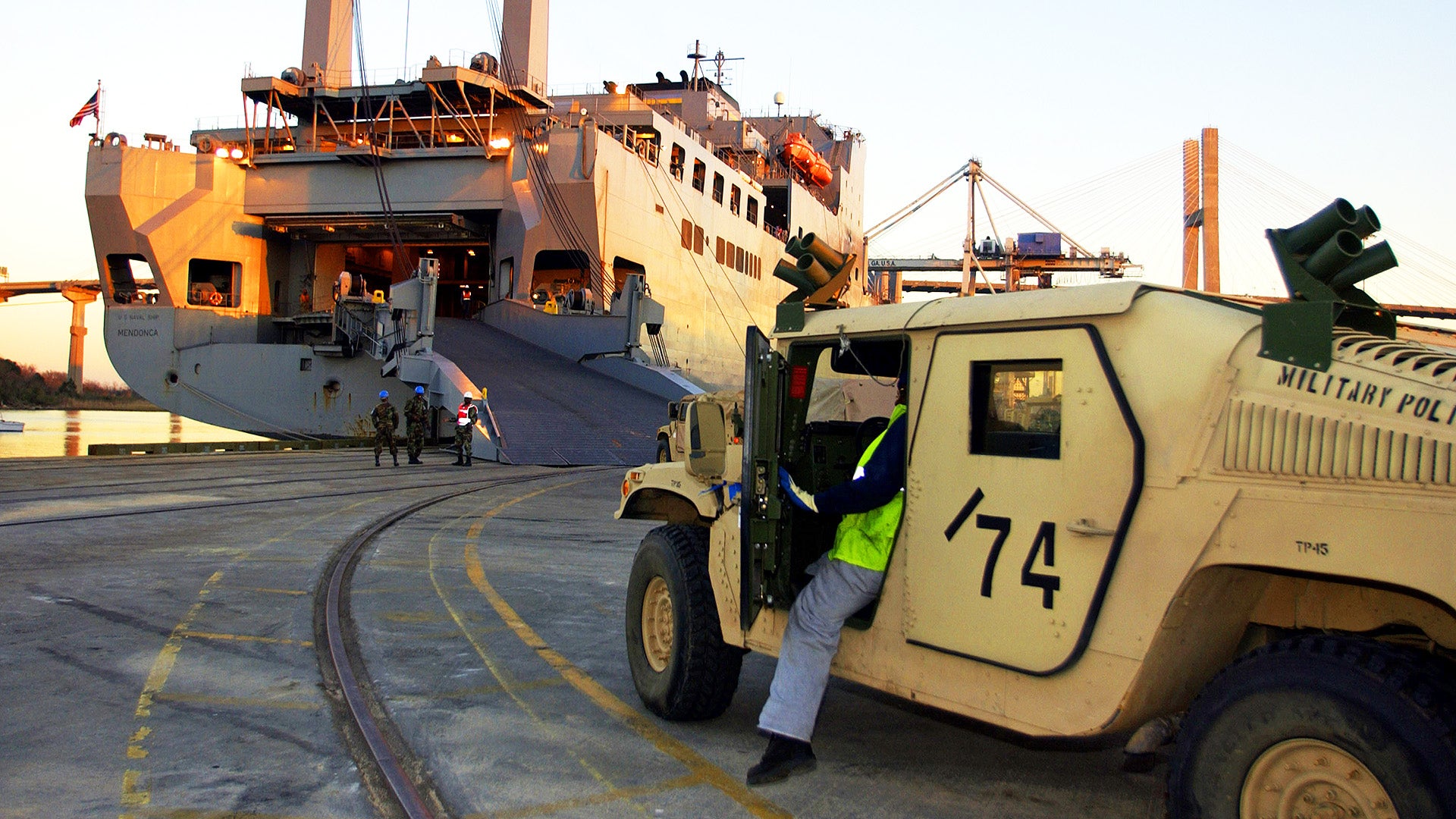A major exercise is underway on the Persian Gulf and Gulf of Oman dubbed “Native Fury 2018” that has the United States military teaming up with the United Arab Emirates in proving that they can move large quantities of materiel over land in the event that the strategic Strait of Hormuz is closed due to Iranian action. Although there is next to no press on this major logistics exercise, the four star that heads up Central Command, General Joseph Votel, is on sight observing the operation which he described as a “rehearsal of an op plan.”
The large scale logistics operation serves two purposes. First it is good training in the event that Iran does “close the strait” via mining and other tactics during a crisis. Second, it proves to Iran that doing so may not have as big an impact militarily as they hope it would, thereby making such an option less desirable.
You can see clearly on the map below how conveying cargo and equipment over land could be accomplished within the UAE’s own borders, but Iran has farther reach than just in the strait or in the Persian Gulf. They can deploy throngs of anti-ship missiles to their southeastern shores along the Gulf of Oman, which would still make that area hostile to shipping, albeit that ‘s a far cry from trying to traverse a floating minefield. Any supply ships would need to be escorted by American or allied surface combatants with dense anti-air warfare capabilities under such circumstances.

Moving cargo through Oman, and then into the UAE may be a safer option depending on the threat scenario, albeit a more complicated one. That is if such an operation would be diplomatically possible. Also, key roadways through the desert are vulnerable to attack, especially by Iranian ballistic missiles. UAE has the THAAD and Patriot missile defense systems in place to fend off low-volume attacks, and the US Navy has its own anti-ballistic missile capabilities, but Iran would likely fire large volumes of ballistic missiles during a conflict, which would make countering the threat completely highly problematic.
Also keep in mind that this exercise is about sustaining American and allied military forces operating in and around the Persian Gulf, not in conveying roughly a quarter of the world’s oil supply on any given day. A prolonged closing of the Strait of Hormuz would cause massive damage to the world economy, and it would impact third world countries in extreme ways, which could result in horrific consequences.
I have written about this strategic reality in various forms for years, and Iran’s potential play to simultaneously control the Mandeb Strait as well, cutting off traffic into and out of the Red Sea. Some have an almost child-like view of the realities of counter-mine operations and just how much damage Iran could do in conflict in Persian Gulf. Suffice it to say it would be a nightmare, but at least it’s good to see that the Pentagon is really working out alternative methods of supplying its war-fighting machine that could be trapped in and near what is a relatively small body of water. This would very likely include at least one carrier strike group, as well as its troops in Kuwait, Qatar, Bahrain, Iraq and other locales.

Iran just concluded a surprise set of large scale drills in the Strait of Hormuz that started on the 22nd of January, and all this comes as tensions between the US and Iran are escalating over the Trump Administration’s change in policy towards the country. Most notably this includes a willingness to withdraw from the Iranian nuclear deal unless major changes to the agreement are made, as well making calls for action over the country’s proxy warfare operations in Syria and Yemen, and their continued development of ballistic missile delivery systems.

On January 23rd, 2018 Vice President Mike Pence said the following while touring Israel:
“We are sending a signal to our European allies that the time has come for changes in the Iran nuclear deal… If our allies won’t join us, President Trump has made clear we will withdraw from the Iran nuclear deal immediately… But we hope, we hope in the months ahead to be able to strengthen it.”
Here’s Nikki Haley making a dramatic pitch last December for action against Iran for violating U.N. resolutions regarding their missile programs:
Meanwhile, America’s closest ally in the region, Israel, has stated officially that Iran’s presence in Syria will not be tolerated, and the Trump Administration seems to share in this sentiment:
But really, the Trump Administration’s major shift in tone toward Iran began nearly a year ago with this walk-on statement by the Trump’s very short-lived National Security Advisor General Michael Flynn:

External forces aren’t the only major factors that could heavily influence Iran’s future geopolitical actions. The recent widespread protests by Iranians over basic and very relevant gripes with the theocracy that rules their country will continue to have repercussions domestically, with the splintering of Iranian society between moderates and hard-liners—the latter of which has its own military in the form of the Revolutionary Guard Corps—becoming increasingly well defined.
So yeah, there’s a lot happening over there, and considering that a closure of the Strait of Hormuz could come in a flash, preparing for such an occasion is money and time well spent by the US military and its regional allies.
Contact the author: Tyler@thedrive.com
